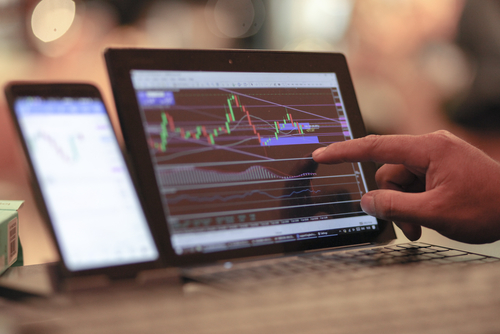Many cliches and phrases have developed in the retail FX trading community, and several stand up to the test of time. Some of the more poignant expressions you’ll see stamped on trading t-shirts as well as our consciousness, yes, some websites do sell these t-shirts.
“The trend is your friend until it bends at the end” is one of the more well-known and well-used phrases in forex trading. It’s a great phrase because it encourages thinking about what to do once you’ve concluded the currency pair’s recent trend has ended.
“Take care of the downside, and the upside will take care of itself” is another. This phrase is all about money-management and balancing your risk, per trade and your overall forex market exposure. If you control risk and understand the effect probability has on your FX trading outcomes, then you’ll give yourself the best possible foundation to thrive.
Then there’s “trade what you see not what you think” the phrase we’ll now discuss in detail, because it’s taken on more relevance during the turbulent times, we’ve witnessed during 2020.
There are times when the fundamental analysis you apply to trade the FX markets becomes redundant. There are such huge influences at play in the markets, examining your economic calendar each day and adjusting your positions based on upcoming events, takes on less importance.
Trump crashing markets with his tweets
From 2016-2020 many analysts joked that Trump’s Twitter feed was the only fundamental analysis you needed. If he tweeted threats versus China, the US equity markets slumped.
It’s easy to forget as markets have reached record highs in late 2020 that the unnecessary trade and tariffs war he initiated versus China, caused a massive slump and sell-off. In late 2018 at the height of the threats, the SPX 500 traded close to 2,400. In early December 2020, it’s at 3,683.
Similarly, when Trump threatened the Fed and indicated that he’d use executive powers to remove the Fed Chair Jerome Powell, the US dollar slumped. Trump believed that US interest rates were too high and out of step with other nations’ interest rate policies.
Powell wanted to normalise rates; he thought markets had become drunk on cheap funding that was only benefitting corporates’ share price and not the real economy. Powell eventually conceded to Trump’s demands, the Fed cut rates in late 2019 and early 2020 and then slashed them to close to zero once the pandemic hit.
The pandemic has overshadowed all fundamental
The pandemic has concentrated collective minds on the “trade what you see not what you think” phrase. You might think based on your fundamental analysis combined with your technical analysis that a market in, for example, EUR/USD will move one way.
But depending on the considerable market forces currently at work, your opinion often counts for nothing. It would be best if you put aside your reasoning, however rational it might be and concentrated on what you see developing on your charts.
The pandemic and the Brexit issues have created tremendous trends on our FX and commodity charts over recent months. We’ve witnessed a USD slump, a GBP rise versus USD, the euro, yen and Swiss franc gaining more appeal as safe havens. Gold and silver have also enjoyed significant gains year to date.
Events listed on our economic calendar did not cause these trends to develop because the data either missed or beat the forecasts made by Reuters or Bloomberg. The market trends have developed because of the phenomena at play in our interconnected global financial world.
It’s important to note that we’re not dismissing the value of our economic calendar, it’s one of the most valuable tools we have. Adjusting your exposure when high impact data is about to be published makes complete sense. But it would be best if you kept the calendar’s influence in perspective.
We had an example on Friday, December 4 of how upside-down fundamental analysis (FA) is right now. The NFP jobs number came in at 245K missing forecasts of 450K+. But some equity markets in the USA reached record highs due to the belief that the government and Fed would have no option but to indulge in more stimulus.
Technical analysis (TA) is more critical than ever right now
Many of us are aware of the arguments that have raged over FA and TA for many years. Which is best?
In truth, to be a successful trader, you need to apply a blend of both skills. One is observational (TA) the other is research-based (FA).
Without a doubt, you need to pay attention to TA on your charts more than ever as the issues of the pandemic and Brexit dominate our FX markets. Sudden movements related to USD will be perfectly illustrated, and you can trace the reason back to financial stimuli; fiscal or monetary. Sudden movements in GBP will be due to Brexit talks either failing or succeeding. So, put aside your predictions and prejudices right now and trade what you see. Oh, and take care of the downside and remember the trend isn’t always your friend. Be careful when it bends at the end.


